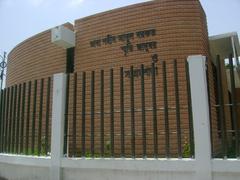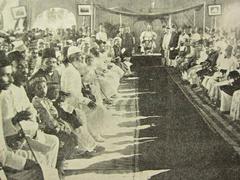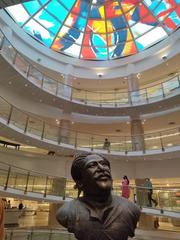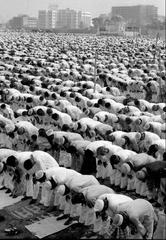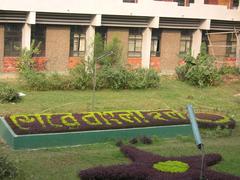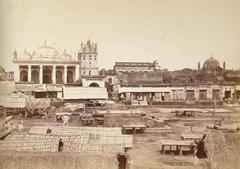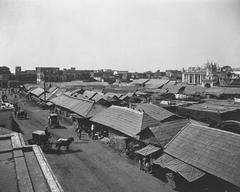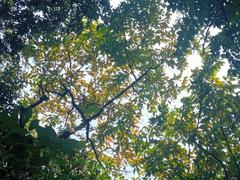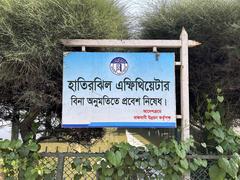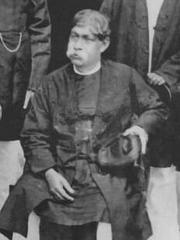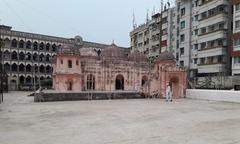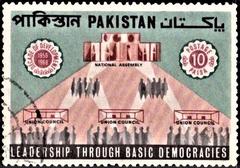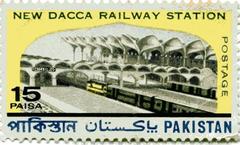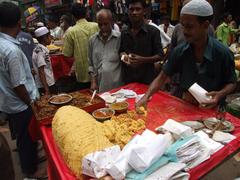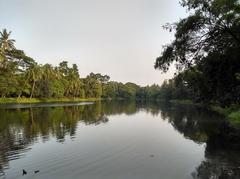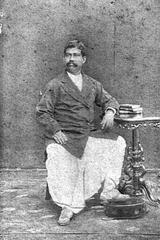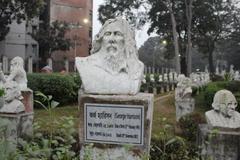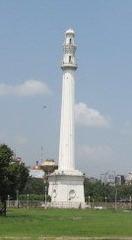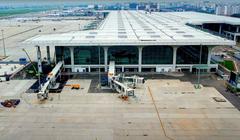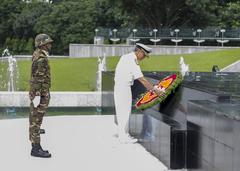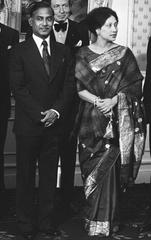Hussaini Dalan: Visiting Hours, Tickets, and Historical Significance in Dhaka
Date: 03/07/2025
Introduction
Hussaini Dalan, nestled in the heart of Old Dhaka, stands as a remarkable testament to Bangladesh’s Mughal heritage and a focal point for Shia Islamic traditions. Built in the 17th century, this grand imambara not only plays a crucial role in Dhaka’s religious life but also serves as a cultural and architectural landmark, attracting history enthusiasts, spiritual travelers, and tourists alike. This comprehensive guide covers everything from Hussaini Dalan visiting hours and ticket information to its layered history, architectural evolution, and nearby attractions to enrich your visit (The Daily Star; Banglapedia; Royal Bengal Tours).
Historical Background: Foundation and Religious Significance
Mughal Origins
Hussaini Dalan was established in the mid-17th century during the reign of Mughal Emperor Shah Jahan by Mir Murad, the Naib Nazim (deputy governor) of Dhaka. The imambara was initially constructed as a center for Muharram commemorations, memorializing the martyrdom of Imam Hussain, the grandson of Prophet Muhammad (PBUH), at Karbala. Bakshi Bazar, the chosen location, was a prominent hub during the Mughal era, reflecting the site’s significance in the city’s social and religious fabric (The Daily Star; Banglapedia).
Religious and Cultural Role
From its inception, Hussaini Dalan played a vital role as the epicenter for Muharram observances in Dhaka. The first ten days of Muharram, culminating in Ashura, witness solemn rituals such as majlis (mourning assemblies), marsiya (elegiac poetry), and processions. These events attract thousands of devotees and foster a unique spirit of interfaith and communal harmony, as both Shia and Sunni communities participate in the ceremonies (Dhaka Tribune).
Architectural Highlights and Evolution
Design Influences and Structural Features
Hussaini Dalan’s architecture reflects a harmonious blend of Mughal and British colonial styles. The original structure, built with brick and lime mortar, features imposing pillars, arched verandas, and a central prayer hall oriented around a large rectangular pond. Over time, the imambara underwent significant renovations, particularly after the 1897 earthquake and during British rule, which introduced neoclassical columns and new decorative motifs while preserving its Mughal essence (Wikishia; The Daily Star).
Key Architectural Elements
- Raised Platform: Protects the structure from flooding and adds grandeur.
- Pond (Dighi): Symbolizes the Euphrates near Karbala; used for ritual purification.
- Verandas and Halls: Spacious prayer halls and side galleries accommodate large gatherings.
- Decorative Calligraphy: Interior surfaces are adorned with Quranic verses and poetry commemorating Imam Hussain.
The Lost Mausoleum: Muqbara-e-Naib Nazim
A historical mausoleum, once adjacent to Hussaini Dalan, housed the graves of several Naib Nazims of Dhaka. Although the structure no longer exists, the graves remain, serving as a reminder of the site’s layered past and the ongoing challenges of heritage preservation in rapidly developing Dhaka (The Daily Star).
Visitor Information: Hours, Tickets, and Accessibility
Opening Hours
- General Hours: Daily from 9:00 AM to 6:00 PM (some sources may cite 8:00 AM to 6:00 PM; confirm locally).
- Special Events: Extended hours during Muharram and major ceremonies; some areas may be restricted during large gatherings.
Entry Fee and Donations
- Tickets: Entry is free for all visitors.
- Donations: Voluntary donations are appreciated to support site maintenance and charitable activities.
Accessibility
- Wheelchair Access: Ramps are available at the main entrance, but some areas have stairs or uneven surfaces.
- Facilities: Basic restrooms and shoe racks are provided. Notify staff for additional accessibility support.
Dress Code and Etiquette
- Modest clothing required; women should carry a scarf for head covering.
- Remove shoes before entering prayer areas.
- Photography is allowed in outdoor and courtyard areas; always seek permission before photographing worshippers or during rituals, especially in Muharram.
Site Layout and Visitor Experience
- Central Prayer Hall: Main space for religious gatherings.
- Shirni Hall: Painted black, used for mourning ceremonies.
- Khutba Hall: Houses the minbar (pulpit) for sermons.
- Pond: Offers a tranquil setting and plays a role in rituals.
- Courtyard: Shaded seating and open terraces provide space for reflection.
A typical visit takes 30–60 minutes, but during Muharram, the experience is immersive with processions and communal gatherings.
Tips for Travelers
- Best Time to Visit: November to March (cool, dry weather); Muharram for cultural immersion but expect crowds.
- Arrive early: Mornings are less crowded and offer the best light for photography.
- Nearby Attractions: Combine your visit with nearby sites like Lalbagh Fort, Ahsan Manzil (Pink Palace), and Armenian Church.
- Transport: Rickshaws, taxis, and ride-sharing services are recommended. Parking is limited, so public transport or walking from nearby landmarks is advisable.
Preservation and Contemporary Status
Hussaini Dalan is a protected heritage site recognized by Bangladesh’s Department of Archaeology. Ongoing restoration and conservation efforts focus on structural stability, preserving artistic features, and improving visitor amenities while maintaining its religious function (Emran Hossain Blog).
Interfaith and Community Importance
The site’s inclusive atmosphere welcomes people from all backgrounds, highlighting Dhaka’s tradition of religious pluralism. Beyond Muharram, Hussaini Dalan serves as a venue for educational events, charity, and community gatherings, reinforcing its role as a living monument in the city’s social and cultural life (Royal Bengal Tours; Banglapedia).
Frequently Asked Questions (FAQ)
Q: What are Hussaini Dalan’s visiting hours?
A: Open daily from 9:00 AM to 6:00 PM; hours may extend during Muharram.
Q: Is there an entrance fee?
A: No, entry is free; donations are welcome.
Q: Is Hussaini Dalan wheelchair accessible?
A: Partially—ramps are available, but some areas have stairs or uneven floors.
Q: Are guided tours available?
A: Tours can be arranged through local operators, especially during non-peak times.
Q: Can non-Muslims visit Hussaini Dalan?
A: Yes, all visitors are welcome. Respectful attire and behavior are expected.
Q: Is photography allowed?
A: Generally yes in outdoor and courtyard areas, but seek permission during religious events.
Conclusion
Hussaini Dalan is a cornerstone of Dhaka’s historical and spiritual landscape. Its blend of Mughal and colonial architecture, vibrant religious life, and community role make it a must-visit for anyone exploring Bangladesh’s capital. Whether you are drawn by its history, rituals, or architectural splendor, a visit to Hussaini Dalan offers a profound window into the city’s past and present.
For travel planning, up-to-date hours, and guided tours, download the Audiala app. Respect local customs, explore nearby heritage sites, and immerse yourself in the dynamic cultural tapestry of Old Dhaka.
Official Sources and Further Reading
- Exploring Bangladesh’s Mughal-era marvels, The Daily Star
- Hussaini Dalan and the story of the lost mausoleum, The Daily Star
- Hussaini Dalan, Banglapedia
- What to See Around Dhaka, Royal Bengal Tours
- Muharram Observances at Hussaini Dalan, Dhaka Tribune
- Historic Graves of Old Dhaka’s Hussaini Dalan, The Daily Star
- Hussaini Dalan, Wikishia
- Exploring Cultural Heritage of Hussaini Dalan, Emran Hossain Blog
- Visit Dhaka - Hussaini Dalan Overview, Touristlink
